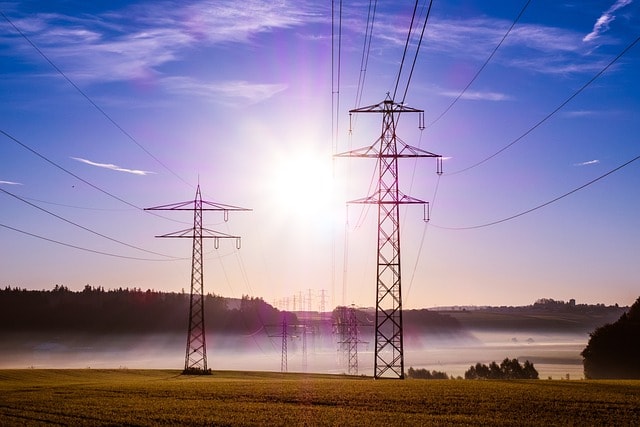
Tracking carbon GHG emissions in the US is crucial for understanding and mitigating the impacts of climate change. Currently, the US is one of the largest emitters of greenhouse gases, with significant contributions from the transportation, electricity, oil and gas production, natural gas use, industry, agriculture, and residential sectors. The Environmental Protection Agency (EPA) and other organizations monitor these emissions, providing detailed inventories and trends. The current state reveals that while some progress has been made in reducing emissions, particularly through the increased adoption of renewable energy and improvements in energy efficiency, substantial challenges remain.
The transportation sector remains the largest source of carbon emissions, driven by reliance on fossil fuels for vehicles. The electricity sector, although seeing a shift towards cleaner energy sources like wind and solar, still heavily depends on natural gas and coal. Industrial sector, industrial emissions alone, are also significant, resulting from energy use and chemical processes.
Looking to the future, the outlook for tracking and reducing carbon emissions in the US involves both technological advancements and policy interventions. Increased investment in renewable energy infrastructure, electric vehicles, and energy-efficient technologies will be critical. Policies such as carbon pricing, stricter emissions standards, and incentives for green technologies are expected to drive further reductions.
The Biden administration’s commitment to achieving net-zero emissions by 2050 sets an ambitious target, necessitating a comprehensive approach that includes innovation, regulation, and collaboration across all sectors. Enhanced tracking and reporting mechanisms will ensure transparency and accountability, helping to measure progress accurately.
Current State of Carbon Emissions in the US
Greenhouse Gas Emissions Overview
In 2020, the United States produced 5.2 billion metric tons of carbon dioxide equivalent greenhouse gas (GHG) emissions, making it the second-largest emitter globally. Historically, the US has been responsible for a quarter of the world’s total greenhouse gas emissions, more than any other country. Annual emissions exceed 15 million metric tons, per person, placing the US among the highest emitters per capita.
These emissions mainly come from the transportation sector due to gasoline and diesel use in vehicles, followed by the electricity sector with significant contributions from coal and natural gas plants. The industrial sector also adds substantially through manufacturing processes and energy consumption. Agricultural emissions arise from livestock and soil management, while the residential sector and commercial buildings contribute more greenhouse gas emissions through heating, cooling, and electricity use.
The impacts of these emissions include global warming, extreme weather events, sea-level rise, and ecosystem disruptions, as well as health issues like respiratory and cardiovascular diseases from air pollution.
Understanding the sources and impacts of these emissions is crucial for developing mitigation strategies. Efforts to reduce emissions include enhancing energy efficiency, transitioning to renewable energy, improving public transportation, adopting cleaner industrial processes, and promoting sustainable agriculture. Policy measures such as carbon pricing, stricter emission standards, and incentives for green technologies are vital.
Coordinated action across federal, state, and local governments, along with participation from the private sector and the public, is essential. By tackling greenhouse gas emissions comprehensively, the US can move towards a more sustainable and resilient future, aligning with global climate goals.
Carbon Dioxide Emissions
Carbon dioxide (CO2) enters the atmosphere primarily through the burning of fossil fuels like coal, natural gas, and oil. Deforestation, waste management, and biological processes also contribute to CO2 emissions. In the United States, the largest source of greenhouse gas emissions is fossil fuel combustion for electricity, heating, and transportation. Power plants that burn coal and natural gas for electricity generation release significant amounts of CO2, as do vehicles that run on gasoline and diesel.
Residential and commercial heating, which often relies on natural gas and oil, further adds to the CO2 emissions. Deforestation, which reduces the number of trees that can absorb CO2, and waste management practices, including the decomposition of organic waste in landfills, also contribute to the overall carbon emissions.
These activities are key drivers of climate change, leading to global warming, extreme weather events, and sea-level rise. Reducing CO2 emissions requires transitioning to renewable energy sources such as wind, solar, and hydroelectric power, improving energy efficiency in buildings, and transportation sector emissions and promoting the use of electric and hybrid vehicles. Adopting sustainable land use practices and enhancing waste management can also help mitigate CO2 emissions. By implementing these strategies, the US can significantly lower its carbon footprint and contribute to global efforts to combat climate change.
Fossil Fuels and Emissions

Fossil fuels, including coal, oil, and natural gas, are the largest contributors to greenhouse gas emissions in the US. The electric power generation and sector, which involves the generation, transmission, and distribution of electricity, accounts for a significant portion of these emissions. Carbon dioxide (CO2) emissions from this sector are primarily due to the combustion of coal and natural gas. Additionally, burning fossil fuels for heating and transportation releases substantial amounts of CO2, methane (CH4), and other pollutants. Reducing reliance on fossil fuels by transitioning to renewable energy sources, such as solar and wind power, is crucial for lowering emissions and combating climate change. Improving energy efficiency and adopting cleaner technologies also play essential roles in this effort.
Sector-Specific Emissions
Electric Power Sector

In 2022, the electric power sector was the second-largest contributor to greenhouse gas emissions in the United States. Since 1990, emissions from electricity generation have dropped by approximately 15%, thanks to the growing adoption of renewable energy and enhancements in energy efficiency. Despite this progress, the electric power sector remains a major source of overall emissions. Continued reductions, including the careful consideration of nuclear energy use, are crucial for achieving climate objectives.
Transportation Sector
The majority of greenhouse gas emissions from transportation are carbon dioxide emissions resulting from the combustion of petroleum-based products. This sector remains a significant contributor to the country’s overall greenhouse gas emissions, and transitioning commercial sector to electric vehicles and sustainable fuels is crucial for reducing its impact.
Industry, Commercial, and Residential Sectors
The industry sector produces the goods and raw materials used daily. Greenhouse gas emissions from this sector come from both direct emissions, such as fossil gas production and fuel combustion, and indirect emissions, like electricity use. The commercial and residential sectors contribute to emissions through direct activities (fossil fuel combustion) and indirect activities (electricity consumption). Improving energy efficiency in buildings and industrial processes is vital for reducing emissions in these residential and commercial sectors.
Agriculture and Land Use Sector
Agricultural activities, including crop and livestock production, contribute to emissions in various ways. Methane and nitrous oxide, potent greenhouse gases, are released during these processes. Sustainable agricultural practices and better land management can help mitigate these emissions. More information about the emissions related other greenhouse gas emissions mostly from agriculture can be found in the agriculture chapter of the Inventory of U.S. Greenhouse Gas Emissions and Sinks.
Future Outlook and Mitigation Strategies
Federal Policies and Regulations

The US government has had varying attitudes towards addressing greenhouse gas emissions. The Obama administration entered the Paris Agreement, while the Trump administration withdrew from it. The Biden administration has committed to reducing emissions to half of 2005 levels by 2030, indicating a renewed focus on tackling climate change. Federal policies play a crucial role in setting standards and regulations that drive emission reductions across various commercial and residential buildings and sectors.
Local and State-Level Initiatives
Municipal, county, and regional governments play a crucial role in greenhouse gas emission reductions. Many have set ambitious, net emissions reduction goals and implemented programs to achieve these targets. Local governments can significantly reduce emissions through measures such as adopting zero-emission vehicles, enhancing the energy efficiency of government buildings, and supporting community-based renewable energy projects.
Individual Action and Behavioral Change
Individual actions can significantly impact climate change. Changes in diet, travel alternatives, household energy use, reduced natural gas consumption,, and family size can contribute to reducing greenhouse gas emissions. Additionally, individuals can engage in local and political advocacy to support climate change initiatives. Simple actions, like reducing meat consumption, using public transportation, and supporting sustainable products, can collectively make a significant difference.
Key Areas for Emission Reductions
Transitioning to Renewable Energy
The transition to renewable energy sources, such as wind, solar, and hydroelectric power, is essential for reducing greenhouse gas emissions. Renewable energy projects not only reduce methane emissions not only decrease reliance on fossil fuels but also provide sustainable energy solutions that can be scaled up to meet future demands.
Enhancing Energy Efficiency
Improving energy efficiency in homes, buildings, and industries is a cost-effective way to reduce emissions. Upgrading insulation, using energy-efficient appliances, and adopting smart energy management systems can significantly lower energy consumption and reduce greenhouse gas emissions too.
Promoting Sustainable Transportation
Transitioning to electric vehicles (EVs) and promoting public transportation can significantly reduce emissions from the transportation sector. Investment in EV infrastructure, such as charging stations, and incentives for EV purchases can accelerate this transition. Additionally, enhancing public transportation systems can reduce the reliance on individual car use, leading to lower emissions.
Sustainable Agricultural Practices

Adopting sustainable agricultural practices, such as precision farming, crop rotation, and organic farming, can significantly reduce emissions from the agriculture sector. Precision farming optimizes the use of resources like water and fertilizers, reducing the release of nitrous oxide, a potent greenhouse gas. Crop rotation enhances soil health and reduces the need for chemical fertilizers, while organic farming minimizes the use of both synthetic and organic fertilizers, inputs that contribute to emissions.
Improved land management practices, such as reforestation and soil conservation, also play a critical role in sequestering carbon and reducing greenhouse gases. Reforestation involves planting trees on deforested lands, which absorb CO2 from the atmosphere and store it in biomass and soil. Soil conservation techniques, including no-till farming and cover cropping, enhance soil organic carbon storage and improve soil structure, reducing erosion and increasing resilience to climate impacts.
Additionally, sustainable livestock management practices, such as rotational grazing and improved feed efficiency, can lower methane emissions from enteric fermentation in ruminants. Integrating agroforestry systems, where trees and crops are grown together, can enhance biodiversity, improve land productivity, and sequester more carbon.
These practices not only help mitigate climate change but also promote biodiversity, improve water quality, and enhance the resilience of agricultural systems to climate variability. Policymakers, farmers, and agribusinesses must work together to implement these sustainable practices widely, supported by research, education, and incentives to ensure long-term success and sustainability in agriculture.
Technological Innovations
Carbon Capture and Storage (CCS)
Carbon capture and storage (CCS) technology can capture up to 90% of carbon dioxide emissions produced from the use of fossil fuels in electricity generation and other industrial processes. CCS involves three main steps: capturing the CO2 at the source, transporting it via pipelines or ships, and storing it underground in geological formations or using it for enhanced oil recovery. By preventing CO2 from entering the atmosphere, CCS can significantly reduce emissions from power plants and industrial facilities, making it a critical tool in the fight against climate change. Implementing CCS technology on a larger scale requires substantial investment, regulatory support, and public acceptance. Integrating CCS with existing infrastructure and developing new projects can help achieve substantial emissions reductions while maintaining energy and industrial production used from fossil fuels during the transition to cleaner energy sources.
Advancements in Renewable Energy
Technological advancements in renewable energy, such as improved solar panels, wind turbines, and energy storage systems, are making renewable energy more efficient and cost-effective. Innovations like perovskite solar cells, which offer higher efficiency and lower production costs than traditional silicon cells, are revolutionizing the solar industry. Similarly, advancements in wind turbine technology, such as larger rotor diameters and higher hub heights, are increasing energy capture and reducing costs. Advanced battery technologies, including lithium-ion and solid-state batteries, are enhancing energy storage capabilities, making it easier to integrate renewable energy into the grid. Continued investment in research and development is essential for driving further innovations and overcoming challenges related to intermittency and scalability. By improving the performance and lowering the costs of renewable energy, these advancements are crucial for reducing reliance on fossil fuels and lowering greenhouse gas emissions on a global scale.
Smart Grids and Energy Management
Smart grids and advanced energy management systems enable more efficient distribution and use of electricity. These systems use digital technology to monitor and manage the flow of electricity from generation to consumption, allowing for real-time adjustments and optimization. Smart grids can integrate renewable energy sources, such as solar and wind, more effectively by balancing supply and the energy demand, and reducing energy losses. They also enhance grid reliability by quickly identifying and responding to outages or disruptions. Advanced energy management systems in buildings and industries can further reduce consumption and emissions through automated controls, energy-efficient appliances, and real-time monitoring. Demand response programs, which adjust energy use during peak periods, can also contribute to overall efficiency. By enhancing the efficiency, reliability, and sustainability of the energy system, smart grids and advanced energy management systems play a critical role in reducing greenhouse gas emissions and supporting the transition to a low-carbon economy.
Economic Impacts and Opportunities
Job Creation in Green Industries
The transition to a low-carbon economy presents significant opportunities for economic sector and job creation in green industries. Renewable energy projects, energy efficiency upgrades, and sustainable transportation initiatives in other countries can generate numerous jobs, contributing to economic growth while reducing emissions.
Cost Savings from Energy Efficiency
Improving energy efficiency can lead to substantial cost savings for households and businesses. Lower energy bills, reduced maintenance and energy costs alone, and improved productivity are some of the benefits of investing in energy-efficient technologies and practices.
Market Opportunities for Sustainable Products
The demand for sustainable products and services is on the rise, driven by increasing environmental awareness among consumers. Companies that implement sustainable practices and provide eco-friendly options can secure a competitive edge and appeal to this growing segment of environmentally conscious buyers. By adopting green initiatives, businesses not only reduce their environmental impact but also enhance their brand reputation, foster customer loyalty, and open up new market opportunities. Sustainable practices can include reducing waste, minimizing carbon footprints, sourcing materials responsibly, and improving energy efficiency. As the market continues to evolve, businesses that prioritize sustainability are likely to see long-term benefits, both in terms of customer engagement and overall profitability.
Challenges and Barriers
Policy and Regulatory Challenges
Inconsistent policies and regulatory frameworks can hinder progress in reducing greenhouse gas emissions. Clear, stable, and supportive policies are essential for encouraging investment in low-carbon technologies and practices.
Technological and Infrastructure Barriers
The transition to renewable energy and sustainable transportation requires significant investment in infrastructure. Developing the necessary infrastructure, such as EV charging stations and smart grids, poses a challenge but is crucial for achieving emission reduction goals.
Public Awareness and Engagement
Raising public awareness about the importance of reducing greenhouse gas emissions and encouraging behavioral change is essential. Education and outreach programs can help individuals understand their impact and motivate them to take action.
Reducing greenhouse gas emissions in the US requires a comprehensive approach involving federal policies, local initiatives, technological innovations, and individual actions. Transitioning to renewable energy sources, improving energy efficiency, and reducing energy consumption are critical strategies for mitigating climate change. By working together, the US can make significant progress in reducing its carbon footprint and addressing the climate crisis. The collective effort of governments, businesses, and individuals is essential for creating a sustainable and resilient future.
